Molewife Causes Axle Failure in Tunnel Ventilation Unit
Everything was running smoothly in the subterranean cleaning department — until the Molewife took a sharp corner a little too enthusiastically with our trusty Dyson tunnel vent unit (also known as a vacuum cleaner floor nozzle). The result: one wheel went rogue, wobbling off into the dust like a disgruntled hamster on strike.
Diagnosis: a broken plastic nipple that used to hold the wheel axle in place. No axle, no wheel — and suddenly the entire Molehouse ventilation logistics came to a screeching halt.
But giving up isn’t in a Mole’s nature. Especially not when there’s brass inserts, soldering irons, and M3 screws within paw’s reach.
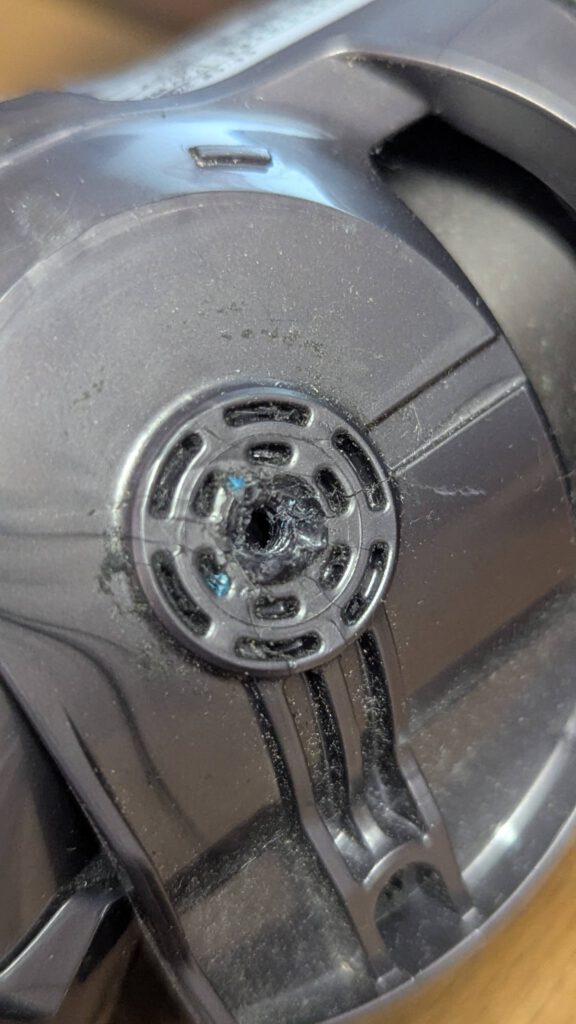
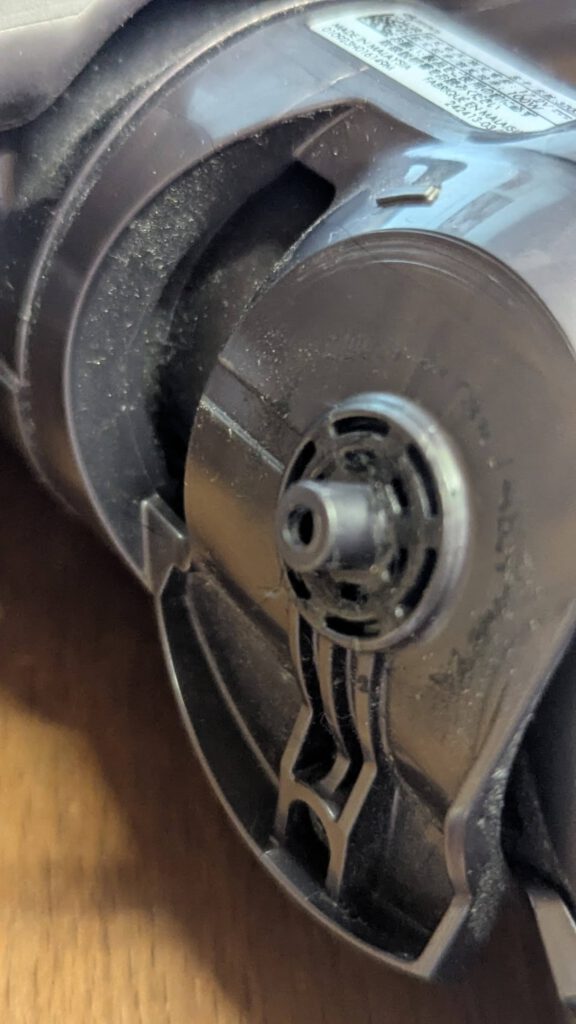
Evaluating Repair Options: How to Save a Mole’s Ventilation System
The plastic around the broken post wasn’t exactly generous — just a thin layer before hitting a cavity with moving parts and the internal supply channels (a.k.a. airflow and wiring). That meant the repair had to be precise. Moles might dig blindly, but we don’t fix blindly.
Here are the options I considered:
🥽 Option 1: Just Glue It™
A classic. Get some plastic glue, hope for the best. Maybe even support it with some baking soda or epoxy trickery.
Verdict: Molewife-tested, Mole-husband-rejected. It might survive one tunnel-cleaning shift, but not two.
🔥 Option 2: Hot Glue + Drill
Build a blob of hot glue where the post was, then drill a new hole right into it. It’s the repair equivalent of filling a tunnel collapse with whatever dirt you find.
Verdict: Creative, but squishy. Too flexible for anything with real load — and wheel axles do see torque.
🔩 Option 3: Heat-Set Insert or Embedded Nut
Now we’re talking mole-grade engineering. Instead of rebuilding the broken post, why not reinforce the whole thing from the inside? My choice:
Melt a M3 Heat-Set-Insert nut directly into the remaining plastic, creating a robust thread that wouldn’t pull out after a few spins.
Think of it as tunneling a steel support beam into a soft clay wall — not pretty, but rock-solid.
To do this, I carefully pressed the nut into position using a soldering iron, letting it sink flush into the plastic without poking into the cavity behind. Once cooled, it sat tight and ready for an M3 screw.
No epoxy. No hope-based solutions. Just heat, steel, and stubborn mole determination.
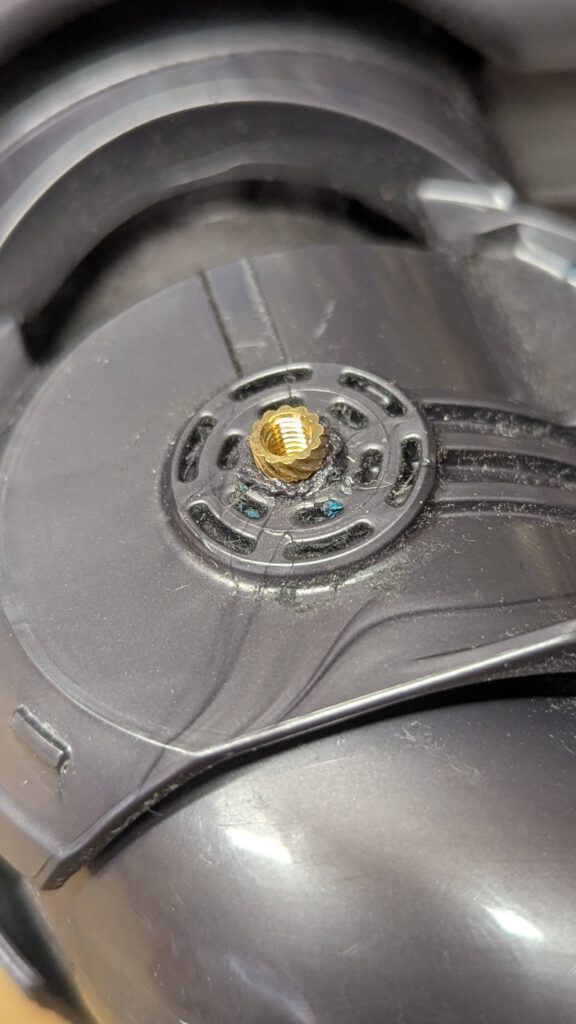
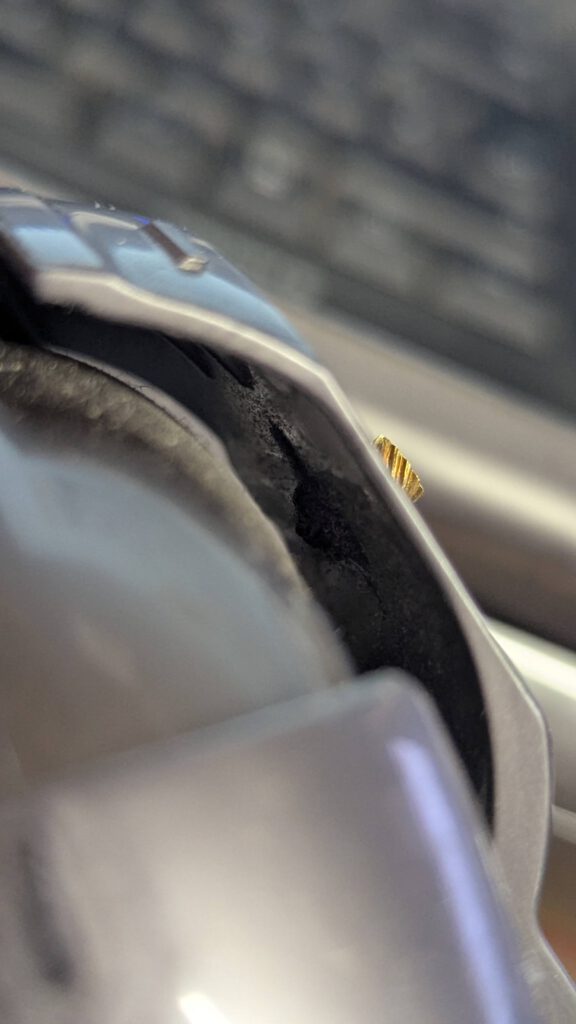
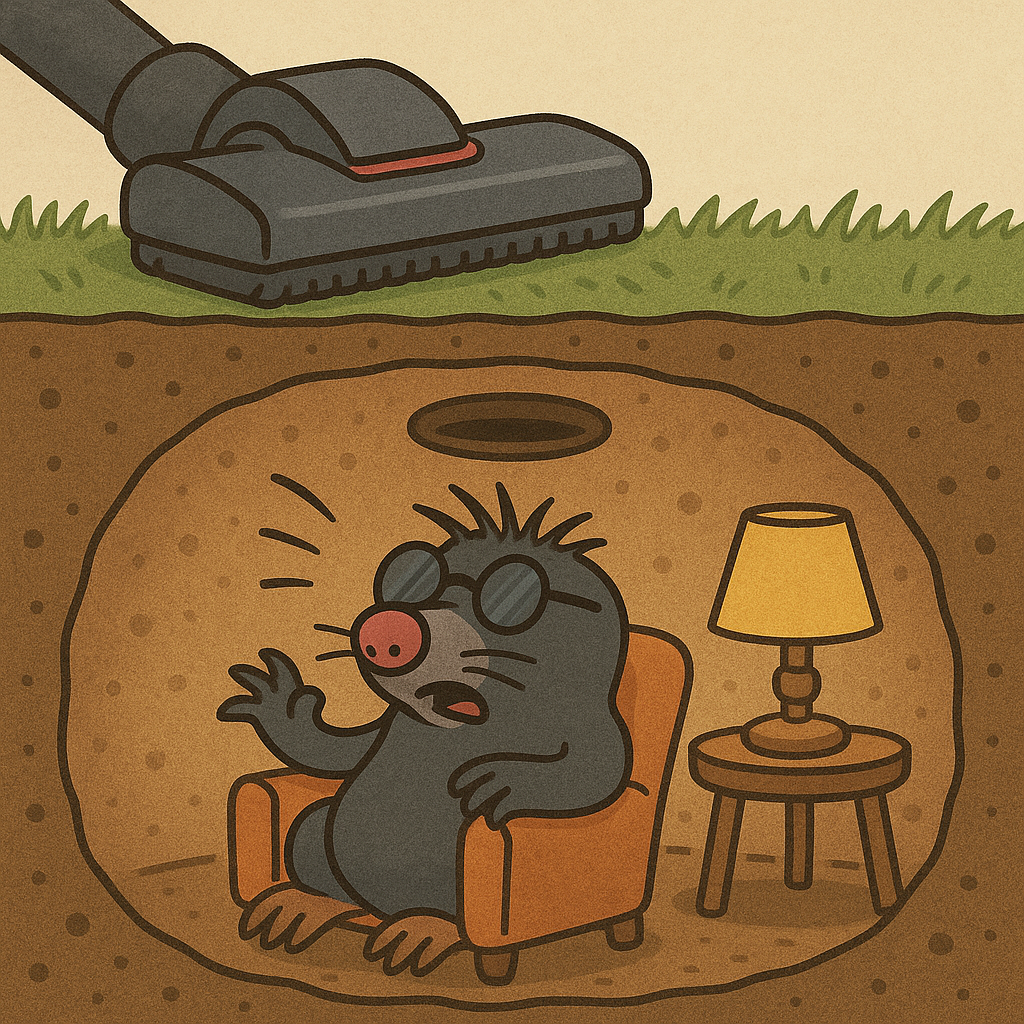
Schreibe einen Kommentar